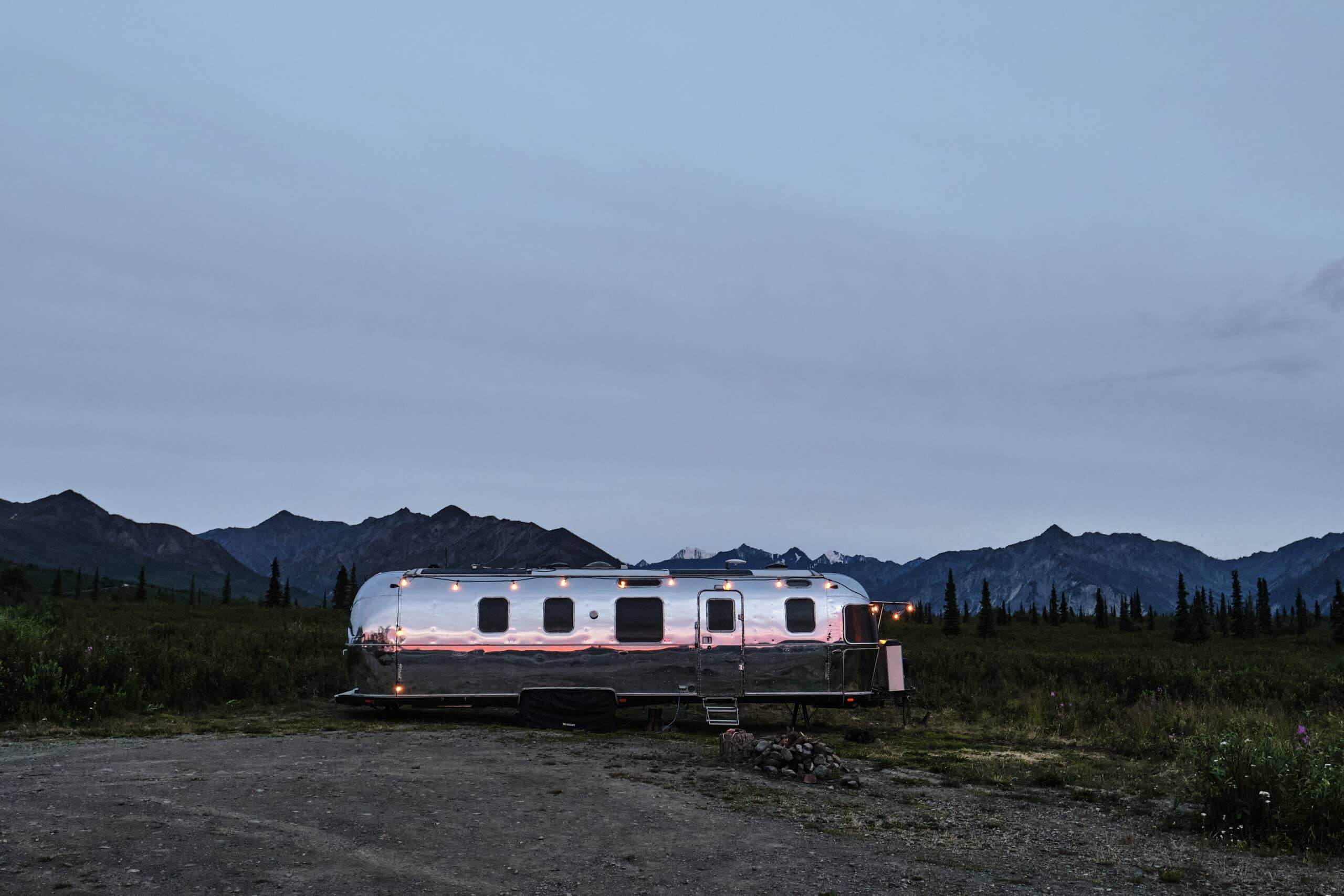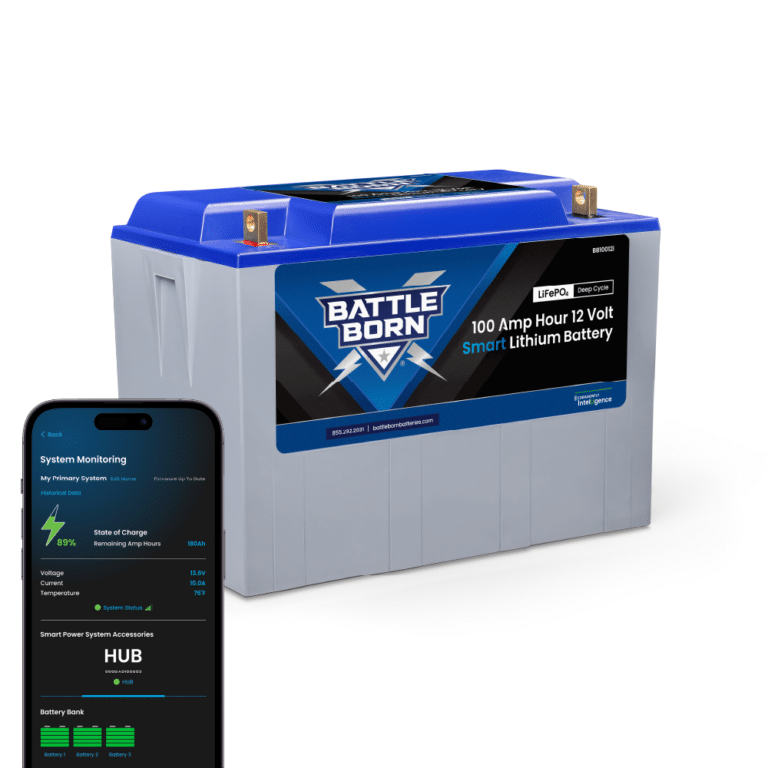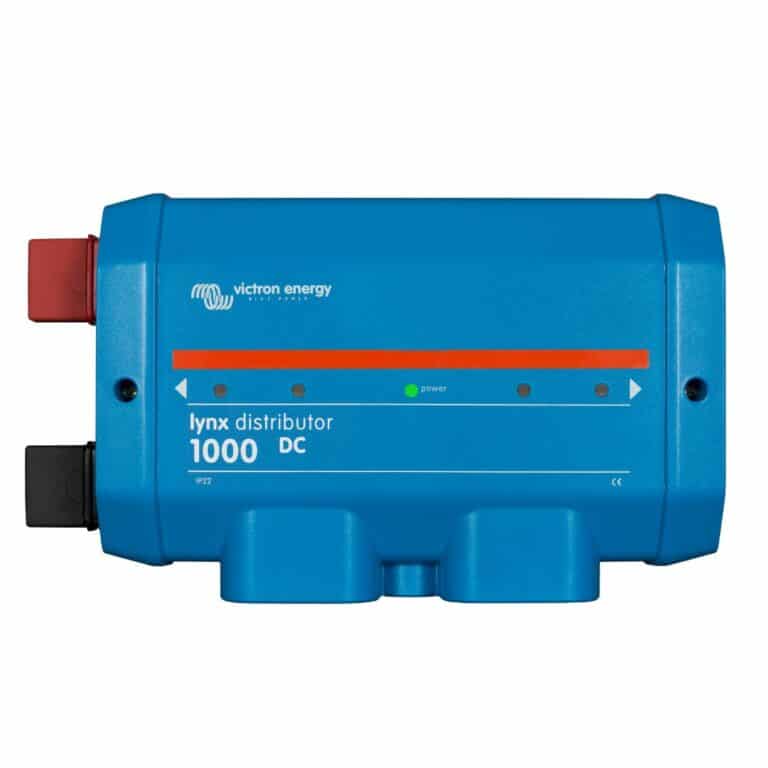
MENUMENU
TALK TO AN EXPERT
Special Hours: 7AM – 6PM PST
TALK TO AN EXPERT
Special Hours: 7AM – 6PM PST
Whether you’re trying to save money on campsites, chasing stunning views, or looking for a camping spot with a little more privacy, RV boondocking is a great way to enjoy many of the comforts of a campground without the crowds or annoying fees. Depending on where you want to travel, how long you want to stay, and which of your appliances and electronics you wish to use will determine exactly what you need to boondock successfully. Regardless of your camping style, having a robust off-grid power system will give you the flexibility and peace of mind to camp anywhere!
Boondocking means camping without hookups for water, electricity, or sewer—typically on public-use lands maintained by the Bureau of Land Management (BLM) or the U.S. Forest Service (USFS).
Unlike crowded campgrounds, boondocking offers space, solitude, and often unbeatable views. You’re free to explore more locations and stay on your own schedule, no reservations required.
Pro Tip: Looking for inspiration on where to go? Check out 7 RVers Share Their Favorite Boondocking Camp Sites for firsthand advice on scenic and secluded destinations.
In the past, limited resources like power and water made extended boondocking difficult. But today’s lithium RV batteries, solar panels, and efficient appliances allow travelers to stay off-grid longer, without sacrificing comfort. In our opinion, boondocking off-grid is the best form of camping.
Whether you’re new to boondocking or looking to upgrade your existing setup, we have five tips and tricks to successfully boondock without sacrificing your favorite comforts of home.
Depending on where, when, and how you plan on boondocking, different types of RVs may better suit your traveling style. Ensuring your rig has the proper capabilities to keep you safe and comfortable is the key to a successful RV boondocking trip.
For those looking to head way off the beaten path or take on extreme weather conditions, your rig must have the proper tires, suspension, and other upgrades to prevent you from ending up in a sticky situation. Off-road capable RVs are generally a little smaller and tend to prioritize functionality over luxury. Still, they’re the perfect fit for those seeking to get the most out of the quiet, beautiful, wide-open public spaces.
On the other hand, some RVers want to enjoy the freedom of boondocking without sacrificing any of the luxuries. While these individuals won’t wander as far off the road, they can still enjoy breathtaking views with larger rigs, more appliances, and added comfort. Additionally, plan to stay off-grid for more extended periods. A larger RV may be more beneficial as you can extend your trip with a larger water tank, increased electrical system capacity, and more wastewater storage.
Pro Tip: Before you hit the road, consider key upgrades that make off-grid camping easier. Check out 5 Essential Upgrades Every Boondocking RV Needs to prep your rig for reliable off-grid power.

No matter how large or small you think your resource supply is, it’s crucial to learn the limits of your resources. We recommend taking a short trip first and then working towards longer trips and more time off the grid. Shorter trips enable you to familiarize yourself with the necessary techniques and acclimatize to the experience. As comfort and confidence increase, longer boondocking trips become more feasible and enjoyable. Apps like iOverlander are great resources for finding boondocking spots throughout the United States.
Once you’ve learned the limits of resources, keeping an eye on your levels while spending extensive time off-grid is still essential. Practice conservation whenever possible and plan to return home or fill up on resources before you deplete them to prevent a frustrating situation. Little things like turning off the water while washing dishes or unplugging electronics that aren’t currently used go a long way in stretching your resources.

It may seem like a no-brainer for those with solar panels to keep their batteries recharged, but more sun exposure will equal more time you can spend off-grid without running a generator. Generally, less generator run time equals more quiet nature enjoyment. If you’re a snowbird seeking warmer weather, you’re probably already chasing the sun.
On the other hand, for those venturing out into colder climates or heavily shaded areas, we recommend choosing a parking spot with the most sun exposure. This will ensure your batteries have access to the maximum amount of charge available and expand the limits of your electrical system.
Remember to be spontaneous as you become more comfortable with your rig and setup! Drive the dirt road longer and spend time in more remote places. You won’t regret the adventure.
Boondocking is a great way to explore the outdoors and disconnect from everyday life. But before you hit the road, you must ask yourself some key questions to ensure you have the best boondocking experience possible.
Whether you realize it or not, where you plan to travel will impact how you should configure and design your electrical system.
Warm climates demand enough power for air conditioning and fans.
Cold or shaded areas require batteries that perform well in low temperatures and can sustain long periods without solar input.
High-sun regions like Arizona or Baja can recharge your batteries daily, meaning you may need fewer panels or less total capacity.
Your time away from hookups defines your ideal system size.
Weekend warriors: A smaller setup with one or two lithium batteries and a compact inverter may suffice.
Full-time RVers: You’ll need higher-capacity batteries, more solar panels, and possibly a generator backup for extended stays.
Every appliance draws different amounts of power. Knowing what you’ll use—and for how long—guides your battery and inverter choices.
High-demand items: Air conditioners, microwaves, and large fridges.
Low-demand items: Lights, laptops, fans, routers, or phone chargers.
If you work remotely, plan for consistent power to run internet equipment and computers. Many RVers even recharge electric bikes or run power tools off their systems.
Depending on your style of boondocking, various power loads require different-sized electrical systems. Whether you want to live in your RV just like you would in a stationary home or keep things minimalistic, there is a power system that will fit your needs. With these things in mind, let’s dive into how to create the perfect RV boondocking power system.
Conducting an audit will help you identify how much power you’ll need and where you can save energy to extend your time off the grid.
One key consideration when conducting an electrical audit for boondocking is determining the size of your electrical system. Knowing whether you have a 30 or 50-amp service will verify the maximum power your electrical system can handle. This information will allow you to accurately determine what appliances and devices you can use while off-grid.
Based on your findings, prioritize what you need to power based on your available power supply. Another critical aspect of an electrical audit is identifying where to save energy. While doing this, consider replacing inefficient appliances with energy-efficient models, using LED lights instead of incandescent bulbs, and minimizing unnecessary power usage.
Doing so will extend the life of your battery’s stored energy and prevent your electrical system from being drained too quickly. Overall, you can make the most of your time off the grid by identifying your electrical needs, determining your maximum power supply, and identifying ways to save energy.
Two methods are typically used to conduct an energy audit. The first involves manually calculating the energy usage of each appliance you plan to use and adding all your calculations together. The second method uses a battery monitor to keep track of the average power consumption throughout the day. While the latter method is more straightforward, both will help you determine precisely how much electrical power your RV will require.
Pro Tip: Want a deeper dive into calculating your exact solar and battery needs? Our friends at Mortons on the Move put together an excellent guide on performing a full RV energy audit. They break down how to measure your appliance usage, calculate watt-hour demands, and translate that into the right number of solar panels and battery capacity for your rig.
Once you’ve conducted an energy audit, the next step is to inventory your rig’s electrical system. Lead-acid batteries have traditionally been used to power off-grid systems, and many RVs still come standard with them due to their affordability.
However, lead-acid batteries are heavy, have short lifespans, and require regular maintenance to ensure they work properly. They also need to be fully recharged each day or they lose capacity quickly, making them a poor choice for intermittent charging of solar power.
Upgrading to lithium batteries is generally considered the best upgrade possible for boondocking. Lithium batteries are 1/5 the weight, 2-3x more powerful, and last 10x longer than their lead-acid counterparts. Additionally, they require little to no maintenance, offer a 100% depth of discharge, and are safe enough to be mounted anywhere in your RV. They also have no issue with partial discharges and charges, making them ideal for solar power and partial generator charging.
When sizing a power system, it is imperative to calculate your daily power usage. This includes taking the power draws for each appliance and electronics you determined during your energy audit and calculating how long you plan to use them daily.
While this can include some complicated calculations, the Battle Born Battery Calculator allows you to plug in these values and get a recommended amp-hour capacity based on your system’s specific needs.
⚙️ Try It: Use the Battle Born Battery Calculator to find your ideal system size based on your daily amp-hour needs.
A complete RV electrical system includes more than just batteries. Each component plays a key role in managing and delivering your stored power efficiently.
Inverter chargers have dual functions. First, they take power from your solar panels, generator, or shore power to charge your batteries. Then, they convert the DC (direct current) power from the batteries to AC (alternating current) power that household appliances require. While batteries and solar panels are core pieces of your electrical system, an inverter charger is necessary to ensure you have the proper power for various electronics and appliances.
A converter is distinct from an inverter as it converts AC voltage to DC voltage. Electrical components in an RV usually run on DC power, and household appliances run on AC power. A converter charger enables charging from an AC power source, like shore power or a generator, and distributes the DC power to the onboard electrical components.
A DC-to-DC charger is the most reliable way to charge your lithium batteries from your vehicle’s alternator while driving. It regulates the current and voltage to safely and efficiently charge your batteries off the alternator.
Car alternators do not have self-limiting features and can overheat if they charge too rapidly. Because lithium batteries can charge so quickly, they can damage alternators if connected directly, and why we recommend DC-DC chargers between them. These also isolate the RV batteries from the vehicle system when the engine is off to prevent draining the starting battery system.
Solar panels are essential for using renewable energy resources and extending your boondocking trips. They utilize photovoltaic cells to capture energy from the sun and push that energy into your electrical system to recharge your batteries. By using more solar panels, many RVers can eliminate their need for a generator, leading to quieter and more peaceful boondocking trips.
Solar charge controllers regulate the transfer of power from your solar array to your battery bank, acting as a current or voltage controller. They ensure that the power from the solar array is adequately directed towards charging the battery bank and act as a one-way gate to prevent reverse power flow that could otherwise drain the batteries. The two main types of solar charge controllers are Maximum Power Point Tracking (MPPT) and Pulse Width Modulation (PWM).]
Battery monitors are helpful tools for monitoring your battery system. They provide valuable information, allowing you to remotely access data on your remaining power and total amp-hours consumed.

Boondocking in cold weather requires additional planning and preparation to ensure a safe and comfortable experience. Proper insulation is critical to keeping your RV or camper warm, especially when temperatures drop significantly at night.
A reliable heating system is another essential component of a cold-weather boondocking setup. Most RVs utilize a propane or diesel furnace, but these units draw power to operate. RVers waking up to a freezing RV because their batteries have died is a common problem in the cold. Making sure your electrical system is reliable and has enough charge to get through the night is critical.
It is a common misconception that lithium batteries do not work well in cold weather. LiFePO4 batteries excel in extreme conditions, with discharge rates in different temperatures far exceeding that of lead-acid batteries.
Battle Born Batteries can discharge in temperatures ranging from -4°F to135°F. However, attempting to charge your batteries when their internal temperature is below 25°F will cause the built-in battery management system to shut off the battery. This prevents potentially irreversible damage to your battery.
Because of this, many users choose to simply install their batteries in the heated living space of their RV. However, if this is not possible, we have designed a solution for even cold outdoor batteries.
Built-in heaters equip our heated LiFePO4 batteries, ensuring the battery stays at optimal charging temperatures, even in extremely cold weather conditions. Boondock mission to the Arctic, anyone? Maybe not, but hey, with heated LiFePO4 Batteries, you have the option.
Heated lithium batteries ensure a reliable power source that can withstand chilly conditions, making it easier to enjoy the great outdoors without worrying about your batteries shutting down.
When installing a battery system and solar setup, you can do it yourself (DIY) or hire a professional installer. While DIY installation can be more cost-effective, it requires tools, technical knowledge, and expertise.
For those who prefer to hire a professional, we have a list of certified installers in areas across the United States. This list includes vetted installers with experience installing lithium-ion battery systems and solar setups. Additionally, a verified installer can give you peace of mind, knowing that they have completed the installation correctly and professionally.
Whether you choose to go the DIY route or hire an installer, utilizing the support and resources available to you can be invaluable. With their experience and assistance, homeowners can feel confident in their system and enjoy the benefits of boondocking in the long term.

We know that building or upgrading an electrical system can be overwhelming, so we’re here to help. Our Reno, Nevada-based sales and customer service team is standing by at (855) 292-2831 to answer your questions!
Also, join us on Facebook, Instagram, and YouTube to learn more about how lithium battery systems can power your lifestyle, see how others have built their systems, and gain the confidence to get out there and stay out there.
We know that building or upgrading an electrical system can be overwhelming, so we’re here to help. Our Reno, Nevada-based sales and customer service team is standing by at (855) 292-2831 to take your questions!
Also, join us on Facebook, Instagram, and YouTube to learn more about how lithium battery systems can power your lifestyle, see how others have built their systems, and gain the confidence to get out there and stay out there.
Shop Best Sellers








Ask a technical specialist now at 855.292.2831
Stay in the Know